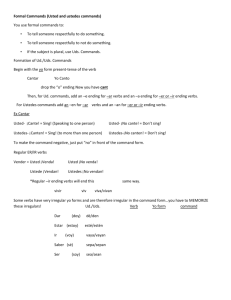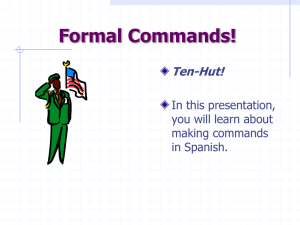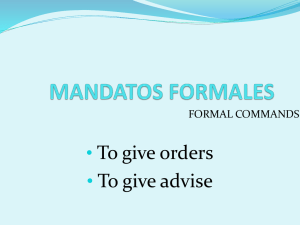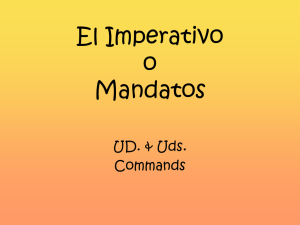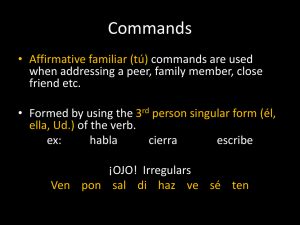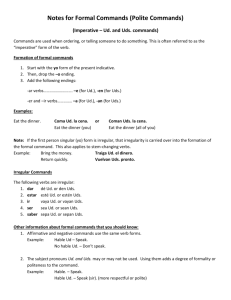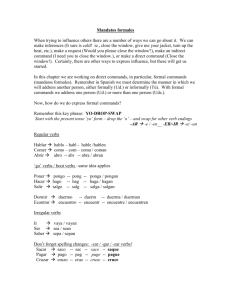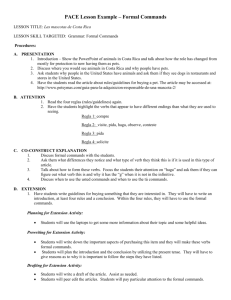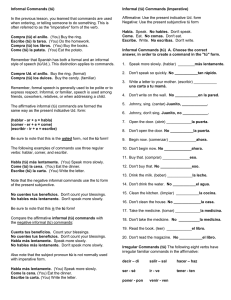Unit 5 Lesson 1 Packet
advertisement
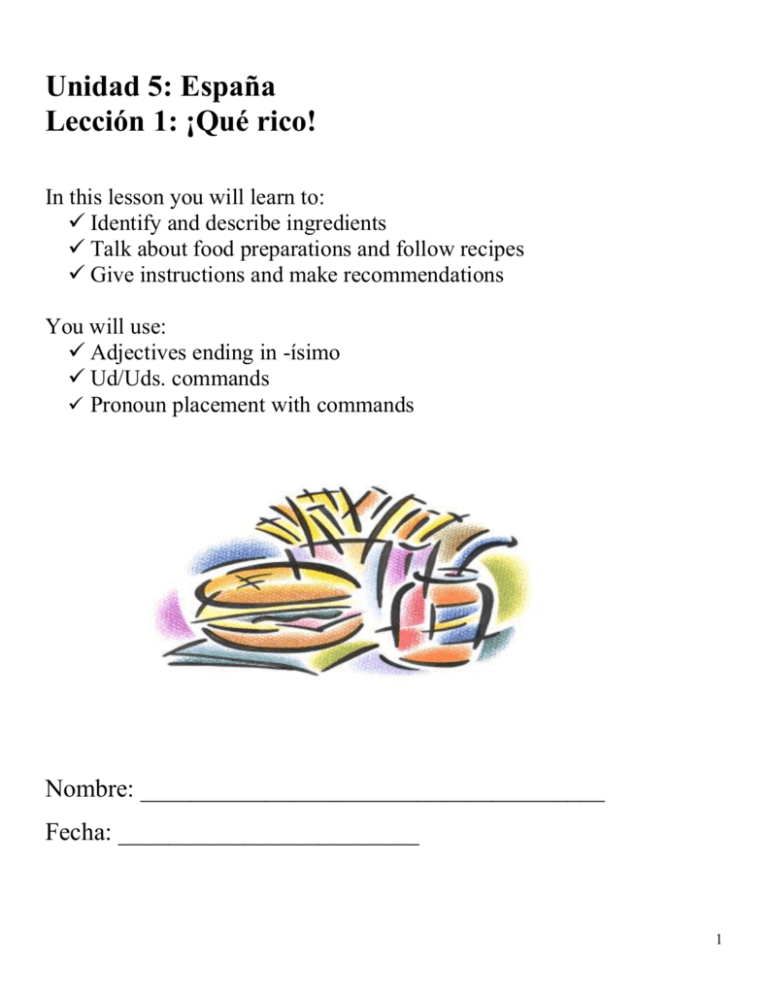
Unidad 5: España Lección 1: ¡Qué rico! In this lesson you will learn to: Identify and describe ingredients Talk about food preparations and follow recipes Give instructions and make recommendations You will use: Adjectives ending in -ísimo Ud/Uds. commands Pronoun placement with commands Nombre: _____________________________________ Fecha: ________________________ 1 Vocabulario el aceite _________________________ el ajo _________________________ el azúcar _________________________ la cebolla _________________________ las espinacas _________________________ la fresa _________________________ la lechuga _________________________ el limón _________________________ la mayonesa _________________________ la mostaza _________________________ la pimienta _________________________ la sal _________________________ el vinagre _________________________ la zanahoria _________________________ el ingrediente _________________________ el supermercado _________________________ añadir _________________________ batir _________________________ freír _________________________ hervir _________________________ mezclar _________________________ probar _________________________ la receta _________________________ la tortilla de patatas _________________________ 2 el sabor _________________________ agrio (a) _________________________ caliente _________________________ delicioso (a) _________________________ dulce _________________________ fresco (a) _________________________ picante _________________________ sabroso (a) _________________________ salado (a) _________________________ ¡Qué asco! _________________________ cenar _________________________ desayunar _________________________ la merienda _________________________ 3 Formal Commands Ud/Uds Commands You use the command form of the verb, the imperative to tell someone what to do. To form the Ud./Uds. commands: 1. __________________________________ 2. ______________________ : ar_____________ er/ir ____________ INFINITIVE YO PRESENT UD. COMMAND UDS. COMMAND UD. COMMAND UDS. COMMAND hablar preparar comer leer abrir STEM CHANGING VERBS INFINITIVE YO PRESENT pensar contar volver hervir pedir 4 **NOTE: The endings used for the formal commands have the vowel opposite to the vowel usually associated with the conjugation. The –ar verbs have –e and the – er and –ir verbs have –a. You just add no before these commands to make them negative. Prepare Ud. _________________ Pida Ud. _________________ Preparen Uds. _________________ Pidan Uds. _________________ ** NOTE: The following verbs are regular, but they have a spelling change in the command form. INFINITIVE UD. COMMAND UDS. COMMAND tocar picar jugar pagar agregar empezar 5 Formal Commands Irregular Forms A verb that has an irregularity in the yo form of the present tense will keep the same irregularity in the command form since the yo form of the present serves as the root for the command. INFINITIVE YO PRESENT UD. COMMAND UDS. COMMAND hacer poner salir venir decir conducir The following are the only formal commands that are irregular. INFINITIVE UD. COMMAND UDS. COMMAND ir: to go ser: to be saber: to know estar: to be dar: to give 6 Formal Commands Object Pronouns The object pronouns are attached to the affirmative commands. They precede the negative commands. FORMAL COMMANDS AFFIRMATIVE NEGATIVE Adjectives ending in ísimo To add emphasis to some adjectives, you can attach the ending –ísimo (a, os, as). If the adjective ends in a vowel, drop it before adding the ending. bello(a) ¡Esta cocina es bellísima! This kitchen is very beautiful! When the last consonant in the adjective is c, g, or z, spelling changes are required before adding –ísimo (a, os, as). cqu ggu zc ricoriquísimo largolarguísimo felizfelicísimo 7
